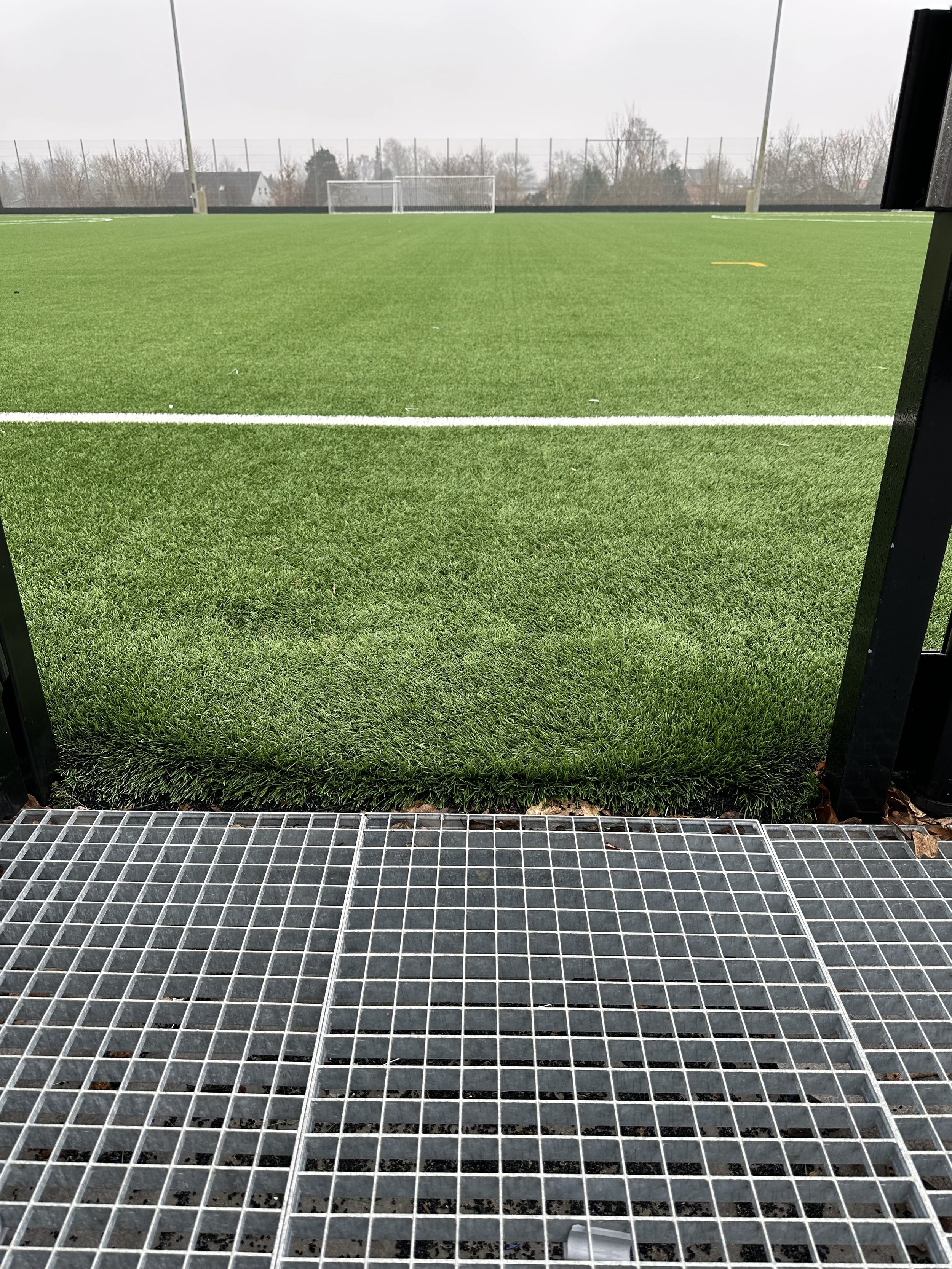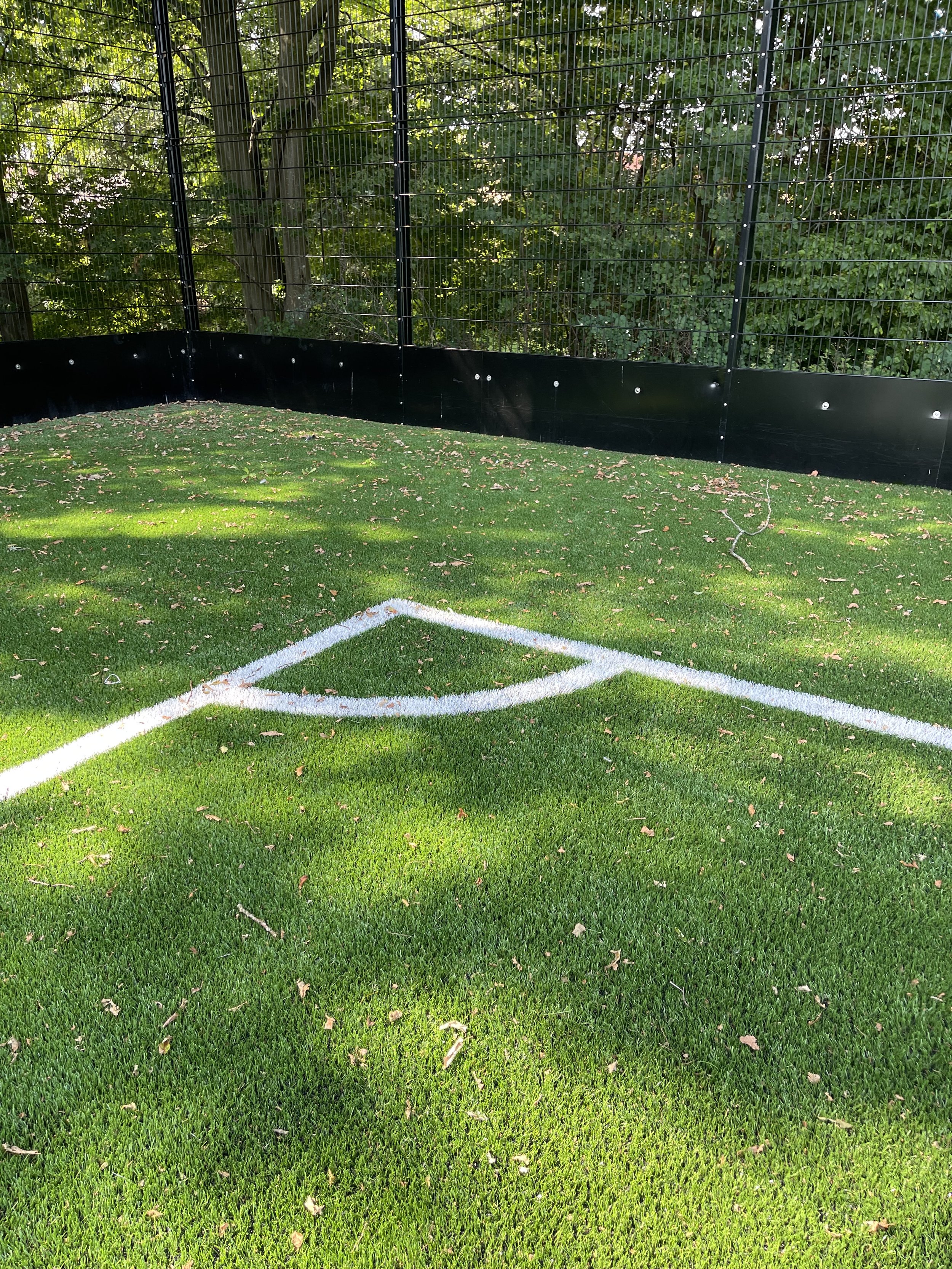
Princeton’s safe use of rubber infill keeps their fields in peak condition
Pioneering Environmental Standards at Princeton
In 2023, Princeton University installed Risk Management Measures (RMM) on their own athletic fields to conduct studies as part of a broader initiative to advance the environmental sustainability of artificial turf. Aiming to demonstrate that these measures can effectively address concerns, Princeton committed to these installations to actively research and prove that artificial turf can be managed in an environmentally responsible way. Through this research, Princeton is helping to validate solutions that minimize the environmental impact of artificial turf.
Rigorous Testing Aligned with EU Standards
Princeton’s involvement centers around testing the effectiveness of retention measures designed to limit the spread of microplastics. Following the guidelines set out in the CEN report (DS/CEN/TR 17519), Princeton’s tests are part of a larger effort to see if these European standards—adapted for the US—can successfully keep microplastic dispersion below the 0.00023 oz/ft²/year (7 g/m²/year) limit. This rigorous approach underscores Princeton's dedication to environmental research and innovation.
Collaborative Research with Firefly Sports Testing
To ensure impartiality and accuracy, Princeton partnered with Firefly Sports Testing, a neutral third-party organization. Firefly is responsible for applying the testing methods established in European projects, conducting the necessary evaluations on Princeton’s fields, and providing the university with standards for verifying and analyzing the results. This collaboration is crucial in ensuring that the findings are both reliable and applicable on a broader scale.
Impact on Future Artificial Turf Standards
Princeton’s research is not confined to its own facilities; it has broader implications for the future of artificial turf across the United States. The university’s efforts are expected to contribute significantly to establishing new standards for environmentally friendly turf practices, potentially influencing policy and practices nationwide. Through its commitment to this research, Princeton is helping to pave the way for safer, more sustainable sports fields.
Advancing Environmental Innovation
Princeton University’s role in this project highlights its commitment to environmental sustainability and innovation. By rigorously testing advanced infill retention measures, Princeton is contributing critical knowledge that could reshape the future of artificial turf. The university’s collaboration with Firefly Sports Testing ensures that the findings are robust and applicable beyond their own campus, making Princeton a key player in the movement toward more sustainable sports infrastructure.
You can read about the Cardigan Mountain case study here.
Key findings
Importance of Barrier Height
The study found that barrier height plays a crucial role in reducing the emission of rubber granulate from artificial turf pitches. Barriers at 24 inches (60 cm) height resulted in significantly lower emissions (approx. 2 lbs/pitch/year or 0.9 kg/pitch/year) compared to 16-inch (40 cm) barriers (approx. 20 lbs/pitch/year or 9 kg/pitch/year) and especially 8-inch (20 cm) barriers, which saw much higher emissions.
Emissions from Players and Equipment
The maximum emission of rubber granulates from players and their equipment was calculated at approximately 10.8 lbs/pitch/year (4.9 kg/pitch/year). The majority (66-75%) of this emission came from granulate inside players' shoes. Maintenance equipment, such as tractors, contributed minimally to emissions, with only 0.44-0.88 lbs/pitch/year (0.2-0.4 kg/pitch/year) after cleaning.
Total Emissions Reduction
The total accumulated emission was below 44 lbs/pitch/year (20 kg/pitch/year) with a 16-inch (40 cm) barrier and approximately 13 lbs/pitch/year (6 kg/pitch/year) with a 24-inch (60 cm) barrier. Further reductions are expected when considering that granulates in players' shoes are often removed in changing rooms or at home, leading to an estimated environmental emission of 4-7 lbs/pitch/year (2-3 kg/pitch/year) with a 24-inch (60 cm) barrier.
Effectiveness of Drainage Systems
No significant contamination was found in the drainage water. The study showed that drainage systems effectively prevented the release of microrubber (rubber granules or residue) and PFAS contamination was within safe limits.
Environmental Safety
The study found that rubber granulate as an infill material does not pose a significant source of PFAS contamination, aligning with environmental safety standards in Denmark for drinking water and freshwater environments.





